The Most Expensive Herbs You Can Grow at Home
A list of the 13 most expensive herbs you can grow at home.
Have you ever considered growing your own herb garden at home? From lavender to vanilla, these 13 most expensive and profitable herbs are perfect for the aspiring home gardener looking to make a little extra cash or save at the store. We all know how prices have been rising at the grocery stores. Therefore, growing just a few herbs on the list can help you save big.


Even if you don’t have a ton of land, growing these expensive herbs at home can seriously help out the grocery bill. I grow herbs both indoors and in my small raised bed garden outside.
Each of the plants on the list below is a perennial plant, meaning they will go dormant in the winter months and come back each spring. Most grow for multiple years (if you have the right growing conditions). This means that you can purchase seeds once and increase your profits or savings year after year!
Bonus: If you are looking to start your own herb business, you can use these most expensive herbs as ideas to get you started!
13 Most Expensive Herbs to Grow at Home
Here are the best herbs to grow at home to save money, make money, and have a practical and useful garden at home.
Saffron
Saffron is renowned for being the world’s most expensive herb. It is the perfect crop for aspiring home gardeners who want to make a big financial return on their investment. It has been used in cooking and medicine since ancient times, and its golden threads are considered among the most valuable herbs in the world. Saffron commands prices of up to $10,000 per pound, but does require some land and effort.

Pros and Cons of Growing Saffron at Home
- Pro: Saffron is a highly valued spice. You can sell saffron for a high price, making it a very profitable crop.
- Con: Saffron is difficult to grow and requires a lot of care and attention, making it a challenging crop for beginners.
Planting Saffron
Saffron grows in USDA zones 6 to 8. Plant saffron in late summer or early fall (between late August and early October) depending on your climate. Plant the corms (the fleshy tuberous roots) about 4 inches deep and 4 to 6 inches apart. Saffron crocuses thrive in dry regions with mild winters such as coastal California. But, thanks to high tunnels and greenhouses, they can grow in much of the country.
Market Demand for Saffron
Saffron is a highly valued spice, and it has a steady demand in the culinary industry. The demand for saffron has been increasing in recent years (a 10.8% increase from 2022 to 2023!), and it can be sold for a high price per gram.
Vanilla
Growing vanilla at home can be quite profitable – depending on the variety you select. For example, Madagascar Bourbon Vanilla beans can cost up to $3 per bean in stores, but they’re relatively easy to grow and produce a hefty harvest. Those with access to sunny, humid climates can opt for Tahitian vanilla beans, which are even more expensive.
If you don’t have an outdoor space suitable for growing vanilla, never fear – you can still enjoy their flavor by growing them indoors using artificial light.

Pros and Cons of Growing Vanilla at Home
- Pro: Vanilla beans are highly valued and can be sold for a high price, making it a profitable crop.
- Con: Vanilla plants can take up to three years to produce beans, making it a long-term investment with a slow return. Vanilla also needs high humidity and a tropical environment, which unfortunately leaves most of us out.
Planting Vanilla
Vanilla grows in USDA zones 10 to 11 (tropical regions), and requires a warm, humid climate. You can plant year-round in these regions, and easily propagate more plants.
Market Demand for Vanilla
Vanilla is a popular flavoring in the food and beverage industry, and the demand for natural vanilla is high as the demand for plant-based products increases. Most of us don’t live in a region that is appropriate to grow vanilla. But if you do, I think it is definitely worth it!
Ginseng
Ginseng is a powerful herb that has been used for centuries for its medicinal values to treat a variety of ailments. It’s also an excellent choice for home gardeners looking to make some extra money.
While growing ginseng requires patience and dedication, it can be quite profitable – depending on the variety you select. For example, American ginseng roots can sell for up to $90 per pound, making it one of the most expensive herbs available. Chinese ginseng is also popular, though not as expensive as its American counterpart. If you’re willing to put in the effort, harvesting your own ginseng can bring in some serious profits.
Keep in mind that it takes several years for the plant to reach maturity before it’s ready to harvest. So, if you’re looking for a quick return on investment this isn’t the herb for you!
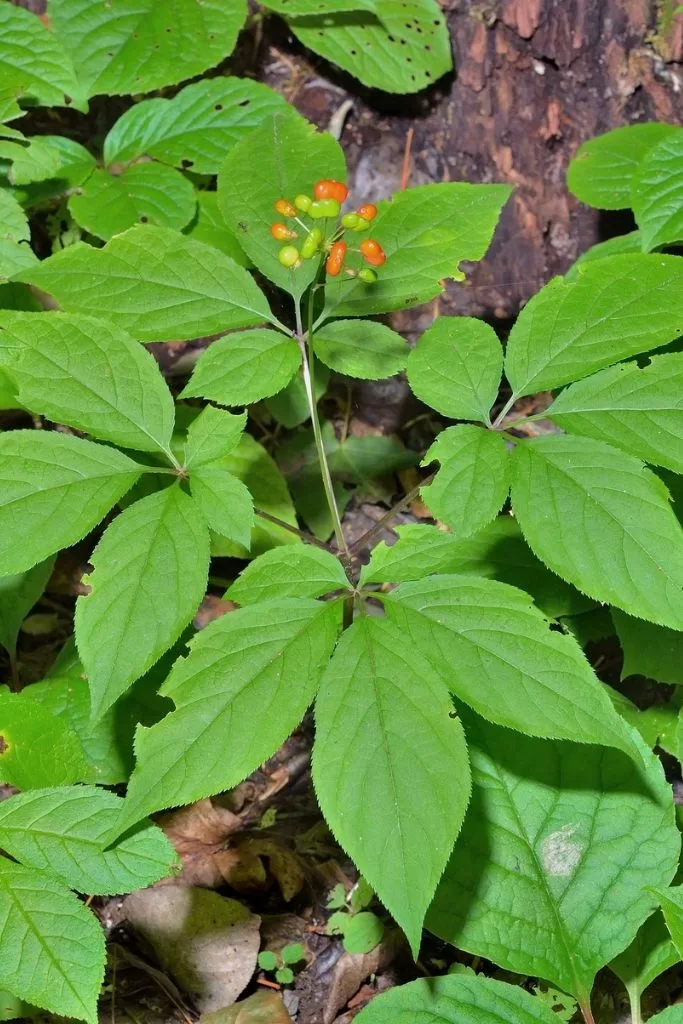
Pros and Cons of Growing Ginseng at Home
- Pro: Ginseng is a highly valued medicinal herb that can be sold for a high price, making it a potentially profitable crop.
- Con: Ginseng requires a lot of shade and takes several years to mature, making it a challenging crop for beginners.
Planting Ginseng
Ginseng grows in USDA zones 3 to 7. Plant ginseng in the fall, between September and November, when soil temperatures are cooler. Plant the seeds about 1 inch deep and 4 to 6 inches apart.
Market Demand for Ginseng
Ginseng is used in traditional medicine for its health benefits, which has created a demand for it in the herbal supplement market. The ginseng market is “projected to reach USD 1019.13 million by 2031, growing at a CAGR of 4.6%,” according to Straits Research.
Lavender
Lavender is an herb that has so much to offer. Not only does it have a beautiful, sweet scent, but it also has some amazing health benefits. Lavender can help aid stress relief and ease anxiety, improve sleep quality, and even help relieve headaches and muscle soreness. Plus, the flowers are perfect for adding a pop of color to your garden or as a fragrant addition to potpourri!
You can sell lavender to local florists or local businesses making their own bath and body products.

Pros and Cons of Growing Lavender at Home
- Pro: Lavender is a versatile herb used in cooking, cosmetics, and aromatherapy, making it a potentially profitable crop with multiple uses.
- Con: Lavender requires well-draining soil and can be susceptible to root rot if over-watered, making it a challenging crop for beginners.
Planting Lavender
Lavender grows in USDA zones 5 to 9. Plant lavender in the spring, between late March and early June, depending on your climate. Space lavender plants about 12 to 18 inches apart. It’s also very easy to grow at home, thriving in sunny spots with well-drained soil.
Market Demand for Lavender
Lavender is used in a variety of products, including essential oils, soaps, and perfumes. The demand for lavender has been increasing in recent years, and it can be sold at a premium price for high-quality varieties.
Echinacea
Not only does Echinacea add a splash of color to your garden, but it also has some amazing health benefits too. Echinacea can help boost your immune system, reduce inflammation, and even fight infections. Plus, it’s easy to grow at home – just give it plenty of sunlight and well-drained soil and you’re good to go!

Pros and Cons of Growing Echinacea at Home
- Pro: Echinacea is can be sold for a high price in the herbal medicine industry, making it a potentially profitable crop.
- Con: Echinacea can be susceptible to diseases and pests, making it a challenging crop for beginners.
Planting Echinacea
Echinacea grows in USDA zones 3 to 9. Plant echinacea in the late spring, between late March and early June. Plant the seeds about 1/4 inch deep and 12 to 18 inches apart.
Market Demand for Echinacea
Echinacea is also used in traditional medicine and is believed to have immune-boosting properties. The demand for echinacea actually grew in 2020, and continues to grow as more people are turning to herbal medicines.
Chamomile
Not only is chamomile a fragrant addition to your garden, but it also boasts a variety of health benefits. In addition to its medicinal uses, chamomile is also great as an ornamental plant. The small daisy-like flowers are beautiful when they bloom in the summer months, making them perfect for decorating flower beds and hanging baskets. Plus, the leaves can repel certain insects like aphids and mites, so keeping this herb around could help keep your garden pest-free!
Because the demand for this herb is high, you can make some serious money from selling your harvest at local farmer’s markets or online. So if you’re looking for an herb that’s both beneficial and profitable – chamomile may be just what you need!

Pros and Cons of Growing Chamomile at Home
- Pro: Chamomile is often used in teas and can be sold for a high price, making it a potentially profitable crop.
- Con: Chamomile requires well-draining soil and can be susceptible to root rot if over-watered, making it a challenging crop for beginners.
Planting Chamomile
Plant chamomile in the spring, between late March and early June in USDA zones 3 to 9. The seeds should be planted about 1/4 inch deep and 6 to 8 inches apart
Market Demand for Chamomile
Chamomile is used in herbal teas and natural remedies, and there is a steady demand for it in the natural health industry. The market is expected to grow 5.5% in the next 10 years.
Mint
Mint is an herb that has been used for centuries for its many medicinal and culinary benefits. It’s a fragrant, refreshing addition to your garden, and it’s also known to offer some great health benefits. Mint is so commonly used that it has a very steady demand. Whether you’re looking for something to add flavor to your cooking or simply want an herb with plenty of health benefits – mint is definitely worth adding to your garden this season!
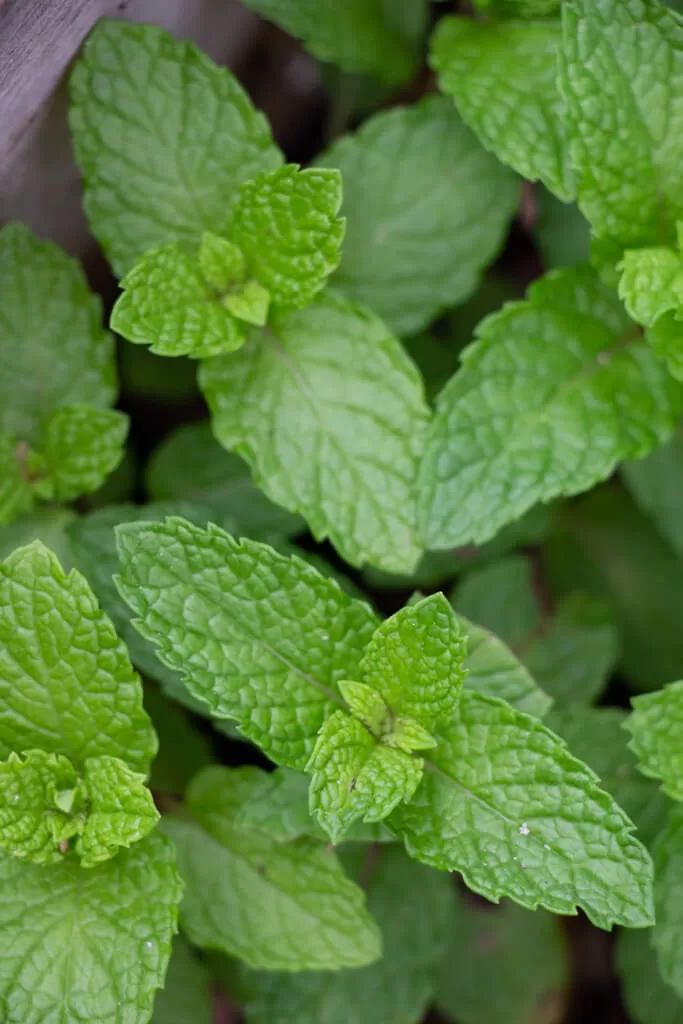
Pros and Cons of Growing Mint at Home
- Pro: Mint is a popular herb that’s very easy to grow and can be sold for a reasonable price, making it a potentially profitable crop with low maintenance.
- Con: Mint can spread quickly and become invasive, so it’s important to keep it contained.
Planting Mint
Plant mint in the spring, between late March and early June, in USDA zones 3 to 11. Space mint plants about 18 to 24 inches apart.
Market Demand for Mint
Because mint is a popular herb used in culinary and medicinal applications, it has a steady demand in the market. However, there is also a lot of competition in the mint market, so it’s important to find a niche to sell into.
Stevia
Stevia is an herb that has been embraced for its sweet taste, yet very low calories. It is a member of the sunflower family and originates in South America. Not only can you save money on your grocery bill by growing your own stevia, but it also makes a great addition to any garden.
In addition to providing you with a tasty alternative to sugar, growing your own stevia also might offer health benefits. Studies show that stevia helps regulate blood sugar levels and may reduce inflammation in the body. It has antioxidant properties that can protect cells from damage caused by free radicals, while also helping lower high blood pressure levels. Other studies say that stevia disrupts the gut. Regardless of your views on the matter, stevia is in demand.

Pros and Cons of Growing Stevia at Home
- Pro: Stevia is a natural sweetener that’s becoming more popular as people look for healthier alternatives to sugar, making it a potentially profitable crop with a growing market demand.
- Con: Stevia can be susceptible to pests and diseases, making it a challenging crop for beginners. Also, stevia might not be the healthiest plant after all.
Planting Stevia
Stevia plants grow in USDA zones 9 to 11 and are extremely easy to grow at home and require little maintenance or care in the right climate. Plant stevia in the spring, between late March and early June. Space stevia plants about 12 to 18 inches apart.
Market Demand for Stevia
Stevia is a natural sweetener that is used as a sugar substitute, and there is a growing demand for it in the food and beverage industry as consumers seek out healthier options. “The stevia market is expected to grow at a CAGR of 8.8% from 2021-2028 to reach $1.11 billion by 2028,” according to prnewswire.com.
Lemongrass
Lemongrass is a versatile herb that can be used in a variety of dishes, from Thai to Indian cuisine. Not only does this fragrant herb add intense flavor to your dishes, but it’s also packed with health benefits! It’s native to tropical regions such as India, Sri Lanka and South Asia, but you can easily grow it at home if you live in a warmer area.

Pros and Cons of Growing Lemongrass at Home
- Pro: Lemongrass is a popular herb in Asian cuisine, making it a potentially profitable crop with low maintenance.
- Con: Lemongrass requires warm temperatures and can be susceptible to frost damage, making it a challenging crop in colder climates.
Planting Lemongrass
Plant lemongrass in the spring, between late March and early June, in USDA zones 8 to 11. Plant lemongrass about 12 to 18 inches apart. When planted in well-drained soil and given plenty of sunshine, lemon grass will thrive in most climates! It prefers warm temperatures and humidity to really take off. Lemongrass plants can reach up to 4 feet tall and produce yellow flowers.
Market Demand for Lemongrass
Lemongrass is used in a variety of cuisines and is also used in aromatherapy products. The demand for lemongrass can vary depending on the market, but it is generally in demand. According to Profshare Market Research, “Lemongrass Oil Market was valued at around USD 282.19 million in 2022 & estimated to reach USD 450.1793357 million by 2029.”
Oregano
Oregano is an herb that is easy to grow and incredibly profitable since it is so common in most kitchens, making it a great choice for home gardeners looking to make some money off their crops. The leaves are used as a seasoning or spice in many dishes, especially in Italian cuisine. Oregano has a pungent aroma and flavor that adds depth of taste to any dish or sauce. It can also be used medicinally to treat digestive problems, skin conditions, and even respiratory infections.
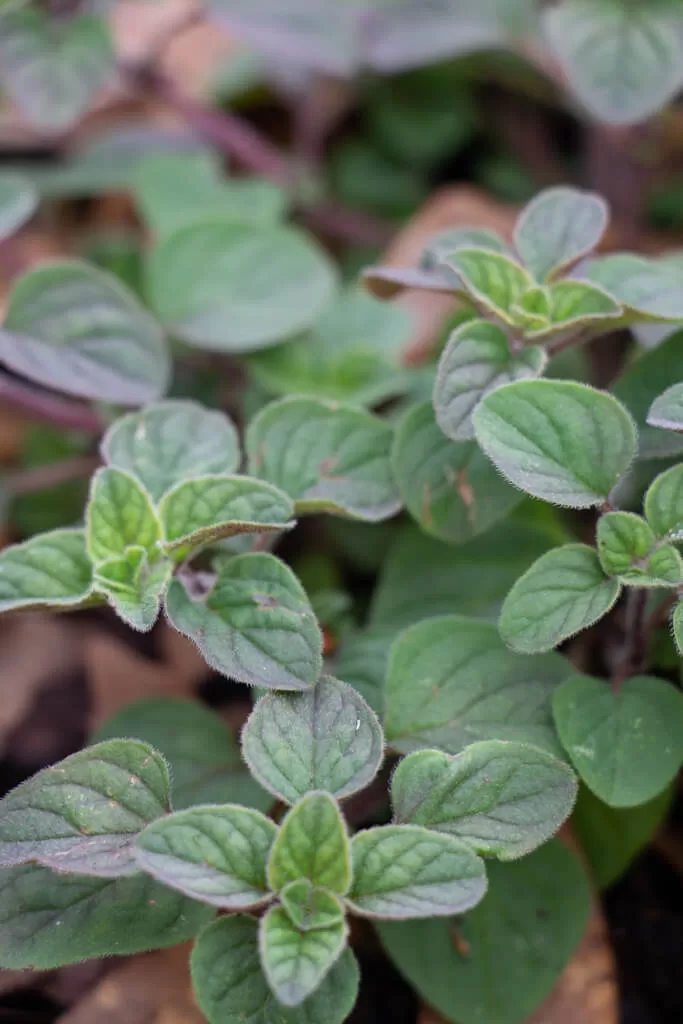
Pros and Cons of Growing Oregano at Home
- Pro: Oregano is a versatile herb that’s commonly used in cooking and can be sold for a reasonable price, making it a potentially profitable crop with low maintenance.
- Con: Oregano can be susceptible to root rot if over-watered, making it important to ensure proper drainage.
Planting Oregano
Oregano grows in USDA zones 4 to 9. Plant oregano in the spring, between late March and early June. Space oregano plants about 12 to 18 inches apart. Oregano is a perennial herb that grows well in full sun, with well-drained soil and plenty of organic matter. It’s drought tolerant and can handle temperatures down to zero degrees Fahrenheit. While oregano you can harvest oregano when young, it’s best if you wait until the plants are mature before cutting them back so they have time to regenerate new growth for the next season’s crop.
Market Demand for Oregano
Because oregano is a popular culinary herb that is used in many different dishes, there is a steady demand for it in the market.
Thyme
Thyme is an herb that is easy to grow and incredibly versatile. Whether you want a fragrant addition to your garden, a tasty seasoning for recipes, or even a medicinal remedy, thyme is the perfect choice. Plus, it looks great in the garden! With proper care and harvesting methods, this herb could easily bring you in hundreds of dollars per season from sales at farmers markets or online outlets due to its popularity.

Pros and Cons of Growing Thyme at Home
- Pro: Thyme is a popular herb that’s used in cooking and can be sold for a reasonable price, making it a potentially profitable crop with low maintenance.
- Con: Thyme can be susceptible to root rot if over-watered, making it important to ensure proper drainage. It is very common, so there may be competition in sales.
Planting Thyme
Plant thyme in the spring, between late March and early June in USDA zones 4 to 9. Space thyme plants about 12 to 18 inches apart. It is drought tolerant and grows well in full sun with well-drained soil. Harvest the leaves when young for fresh use or dried for storage.
Market Demand for Thyme
Thyme is also a popular culinary herb that is used in many dishes, and there is a steady demand for it in the market.
Rosemary
Rosemary is an aromatic herb that has been used for centuries in both cooking and medicinal applications. With its bright evergreen leaves and pungent scent, it’s a great addition to any home garden. Its fragrant foliage can be harvested throughout the growing season to add flavor to savory dishes or use as a natural remedy. And because it’s so easy to grow, you can save money by not having to buy it from the store!

Pros and Cons of Growing Rosemary at Home
- Pro: Rosemary is probably the most popular culinary herb, and can be sold for a reasonable price, making it a potentially profitable crop with low maintenance since it is a fairly hardy plant.
- Con: Rosemary is incredibly common, so you will have competition in sales.
Planting Rosemary
Plant rosemary in the spring, between late March and early June in USDA zones 7 to 10. The plants should be spaced about 18 to 24 inches apart. Rosemary plants can be grown from seeds or cuttings and grows best in sunny locations with good drainage.
Market Demand for Rosemary
Rosemary is used in culinary and medicinal applications, and there is a steady demand for it in the market.
Sage
Sage is an herb with a long and storied history. It has been used for centuries in cultures all over the world for its medicinal and ritual uses, as well as its distinct flavor. Sage is easy to grow in most climates, so you can have fresh sage right in your own backyard. Because if it’s history in the United States with Native cultures, it is important to grow your own and not harvest from the wild.
Whether you use sage as a culinary ingredient, ritual tool, or herbal remedy, it’s sure to become one of your favorite herbs to grow at home.

Pros and Cons of Growing Sage at Home
- Pro: Sage is a popular herb used in cooking, medicine, and ritual, and can be sold for a reasonable price, making it a potentially profitable crop with low maintenance.
- Con: Sage can be susceptible to pests and diseases, making it important to ensure proper care and maintenance.
Planting Sage
Sage is typically planted in the spring, between late March and early June in USDA zones 5 to 9. Space sage plants about 18 to 24 inches apart.
Market Demand for Sage
Sage may not have as high of a demand or sales price as some of the other herbs on this list. However, if you can find a niche market, it can still be profitable to grow sage.
Pin It for Later!
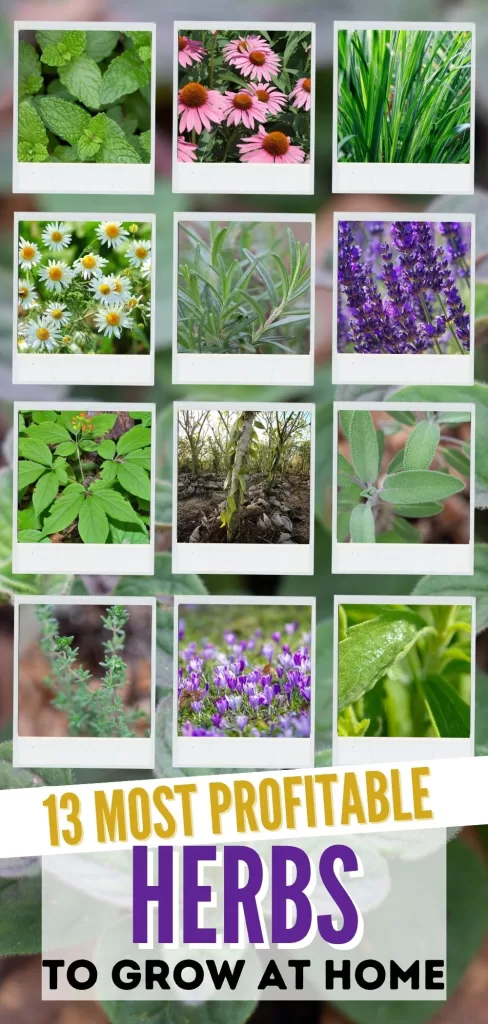
These medicinal and culinary herbs are the best way to use each square foot of space in your garden to maximize your profit margin.
If you grow an abundance of these plants and are looking for help with long-term storage or preservation for selling, check out these ideas:

About the Author:
I’m Brittany, totally modern and mainstream turned crunchy mama!
Read more here about how I went from a totally incompetent cook and hyper-consumer to striving to live a more meaningful life from scratch.
I can’t wait to share my modern homesteading journey with you and I hope I inspire you to join along!

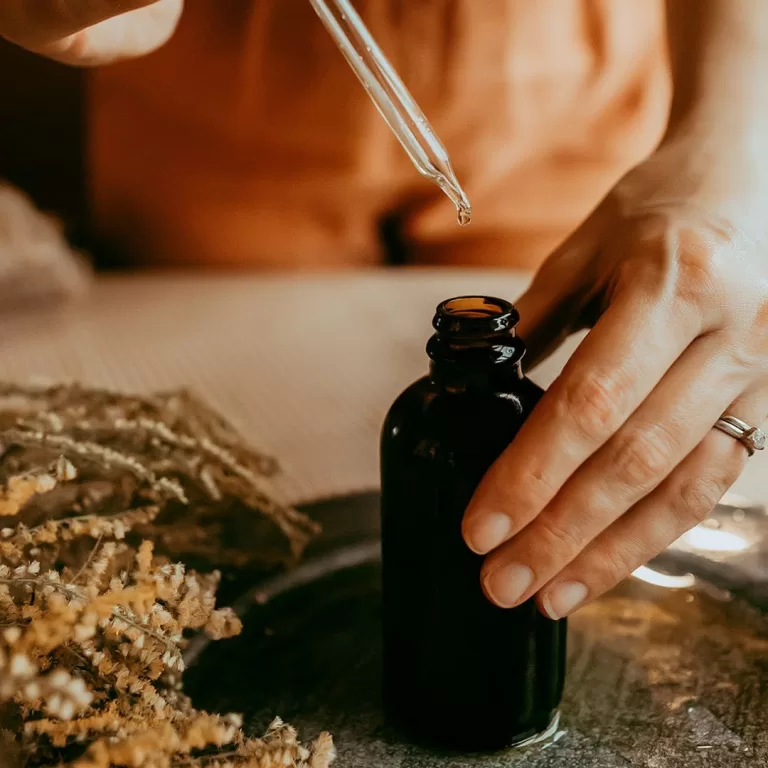


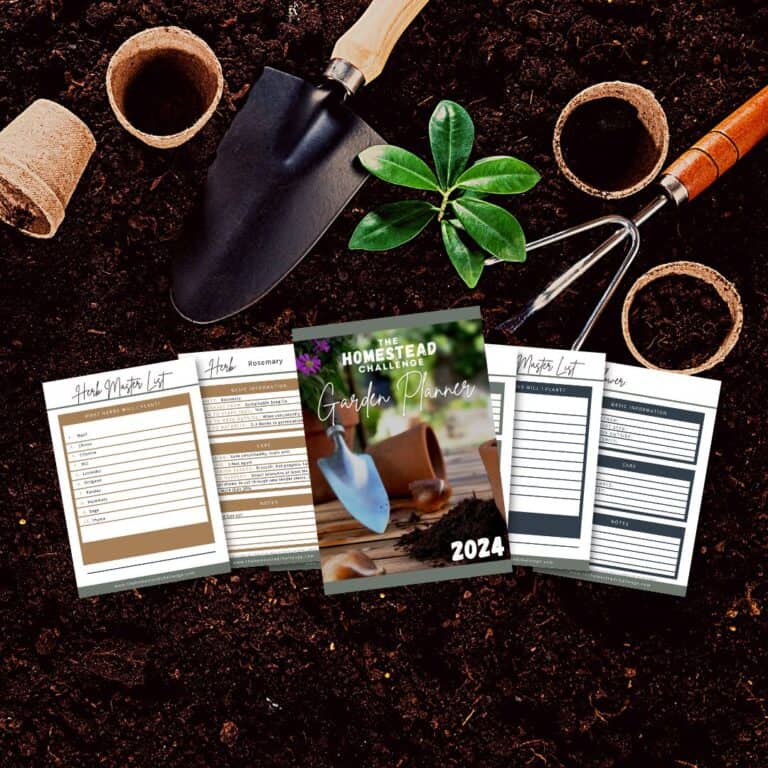
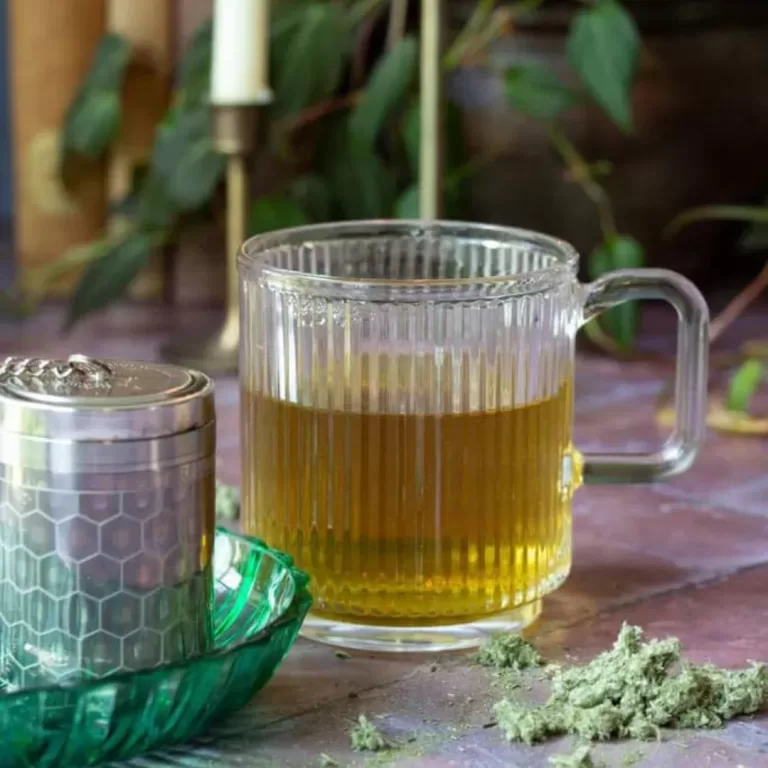

So much great information! Thank you.